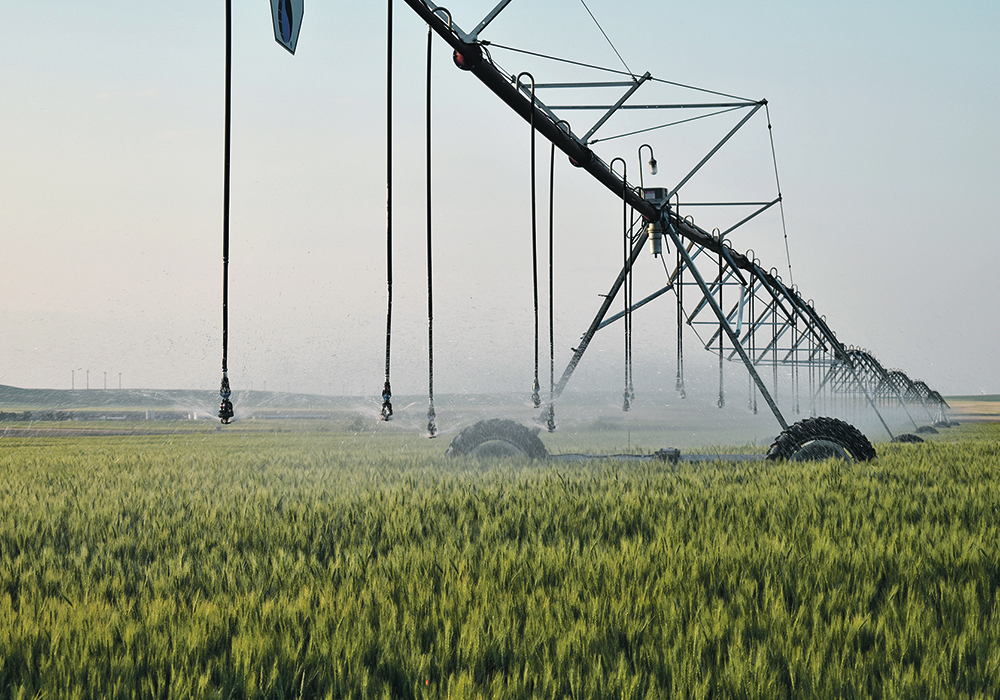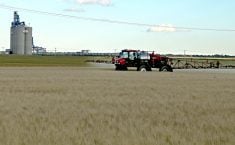Farmers growing cereal crops under irrigation are warned to watch for the bacterial disease, which can spread quickly
Producers who irrigate cereal crops in southern Alberta should be aware of bacterial leaf streak, which is spreading rapidly, according to an Alberta Agriculture crop specialist.
Leaf streak differs from wheat streak mosaic in that it can spread far more rapidly because it is caused by a bacterial pathogen. Wheat streak mosaic is spread through wheat curl mites, said Michael Harding, Alberta Agriculture plant pathologist.
“The temperatures and conditions created by irrigation, storms and rainfall is just creating a really conducive environment to drive bacterial replication,” he said.
Read Also

New coal mine proposal met with old concerns
A smaller version of the previously rejected Grassy Mountain coal mine project in Crowsnest Pass is back on the table, and the Livingstone Landowners Group continues to voice concerns about the environmental risks.
Since leaf streak is a bacterial infection, Harding said the spread can double in a matter of hours instead of days, causing streaks in leaves and, when it spreads to the glume, resulting in black chaff.
If the flag leaves and heads are scorched, that’s the point at which there likely will be economic levels of damage.
“But we’re kind of past that point where if you still have green flag leaves and green heads, you probably aren’t going to have a lot of yield loss but that glume blotch can potentially be a downgrading factor, which can be a significant loss,” said Harding.
“(Leaf streak is) becoming worse. It has been around for a very long time but usually a small bit here or we’ll see one field with a little bit of symptoms and we won’t see it for three or four years.”
Wheat is the most susceptible of cereal crops to the bacteria and Harding said the timing of cases this season will not likely result in major yield losses in most cases.
“But any of the wheat that either was seeded late or is just a longer season market class or variety and the heads are still filling, then we are seeing some problems and it will lead to some yield loss,” he said.
Some of the fields in southern Alberta Harding’s seen are up to 75 percent infected, while others only have a few spots, which increase in size with every pass of the irrigation pivot or every rainfall.
“There are some fields which have lots of leaf streak and black chaff just about all the way across the whole field.
Harding said there aren’t any in-season bactericides that can be sprayed and the best way to stem the spread is through irrigation management and ensure the canopy dries out between passes of the pivot.
“That might mean putting a little bit more water on and then waiting a longer time to run the pivot again so you get good dryness of the canopy,” he said.
The other way to prevent future spread of either leaf streak or black chaff is to ensure not to use seed from infected fields next year, Harding added.
“It is seed-borne and seed transmitted and you’ll just end up with higher risk of bacterial risk in 2023,” he said.
If a crop is showing symptoms of either leaf streak or black chaff, Harding said it must be managed immediately to prevent long-term impacts.
“You can’t manage this disease in the short term, unfortunately, because we don’t have cultivars with genetic resistance (or) foliar-applied bactericides that can in any economic way suppress the disease,” said Harding.


















